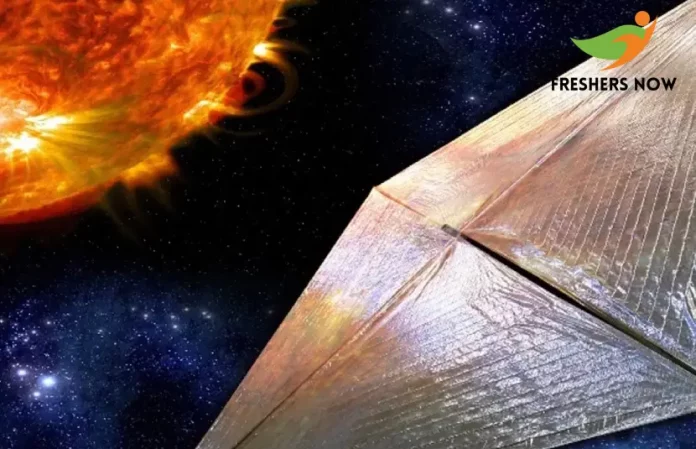
NASA’s Solar-Powered Spacecraft: In the vast expanse of space exploration, innovation knows no bounds. NASA’s groundbreaking solar-powered spacecraft represents a leap forward in propulsion technology, harnessing the limitless power of the sun to traverse the cosmos. This article delves into the pioneering advancements of solar sail technology, as demonstrated by NASA’s endeavors.
NASA’s Solar-Powered Spacecraft
NASA achieved a successful launch of its Advanced Composite Solar Sail System spacecraft on Wednesday, April 24, from New Zealand at 3:30 a.m. IST. Mounted atop Rocket Lab’s Electron rocket, this pioneering NASA’s Solar-Powered Spacecraft is designed to harness sunlight for propulsion. Its mission includes orbiting 1,000 kilometers above Earth. Once deployed, approximately 25 minutes after liftoff, the solar-charged craft will unveil an impressive 80-square-meter measurement.
Unveiling Solar Sail Technology
Solar Sail Technology revolutionizes space propulsion by leveraging the pressure exerted by photons from sunlight. Unlike conventional propulsion methods reliant on fuel, solar sails utilize the momentum of photons to generate thrust, enabling spacecraft to journey vast distances with minimal energy consumption. Hence, this innovation opens new frontiers for exploration beyond the confines of Earth’s orbit.
The Birth of NASA’s Solar-Powered Spacecraft
NASA’s commitment to innovation and exploration culminated in the development of solar-powered spacecraft equipped with solar sails. So, these NASA’s Solar-Powered Spacecraft, propelled by the gentle push of sunlight, represent a paradigm shift in space travel, offering a sustainable and efficient means of propulsion for future missions to distant celestial bodies.
Advantages of Solar Sail Propulsion:
The adoption of solar sail technology brings forth numerous advantages for space exploration. Unlike traditional propulsion systems, solar sails require no onboard fuel, reducing the logistical constraints and costs associated with resupply missions. Additionally, NASA’s Solar-Powered Spacecraft can achieve higher velocities over time, enabling expedited journeys to destinations within our solar system and beyond.
Applications and Potential of Solar Sails:
The versatility of solar sail technology extends to a myriad of potential applications in space exploration. From reconnaissance missions to distant asteroids and comets to the establishment of interstellar probes, solar-powered spacecraft offer unparalleled opportunities for scientific discovery and exploration of the cosmos.
Challenges and Future Developments:
Despite its promise, solar sail technology faces certain challenges. Meanwhile, including the need for large, lightweight sail structures and precise navigation techniques. However, ongoing research and advancements in materials science and spacecraft design hold the potential to overcome these obstacles, paving the way for further innovations in solar-powered propulsion.
The spacecraft exemplifies the agency’s commitment to pushing the boundaries of space exploration through innovative technology. By harnessing the power of sunlight, these spacecraft pioneer the utilization of solar sail technology, offering a sustainable and efficient means of propulsion for future missions to explore the mysteries of the universe. As humanity looks towards the stars, solar-powered spacecraft stand poised to lead the way, propelled by the inexhaustible energy of the sun. Want to know more about Current Affairs? then follow Freshersnow.com on a daily basis.



